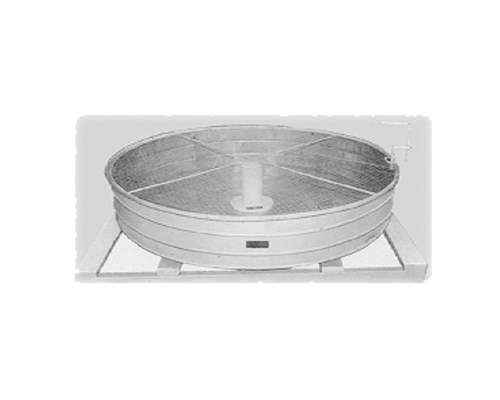je@jeeyvee.com
The pan (1) 122cm in diameter & 25.5 cm deep is made from 20 gauge copper sheet, tinned inside and painted white outside. A stilling well (2) provides an undisturbed water surface around the point of the fixed point gauge (3) by breaking any ripples that may be present in the main part of the pan. It consists of a brass tube mounted on a heavy circular base, which ensures that its position in the pan is not affected by the tube 120 Deg. Apart near the base, permit the flow of water at the point of measurement. The reference point is provided by the brass rod, fixed at the centre of the stilling well and ending in a tapered point, exactly 190mm above the base of the pan. The pan rests on a white – painted wooden stand (4), which ensures that the bottom of the pan is above the level of surface water in rainy weather. It is covered with wirentting of standard mesh (5) in order that loss of water from the pan by extraneous agents such as birds and animals may be avoided. A thermometer (6) to measure the surface temperature of the water is fixed with a brass clamp (7) to the side of the pan so that the bulb just dips in the water. A totalizing anemometer is normally mounted at the level of the instrument to provide the wind speed information required.
The graduated measuring cylinder from which water is poured into the pan is a brass container with a scale 0-20cm engraved inside it, along its length. It has a diameter exactly one-tenth that of the pan viz. 122mm, so that the cross sectional area of the cylinder is exactly one-hundredth that of the pan, and 200mm water from the cylinder added to the pan will raise the level of water in the pan by 2mm. Each small division of scale corresponds to 1cm and the level of water in the pan can, therefore be measured correct to 0.1mm. Since the capacity of the cylinder is only 20cm the cylinder has to be filled morethan once, it over 2mm of water is lost by evaporation from the pan during the interval between two observation.

